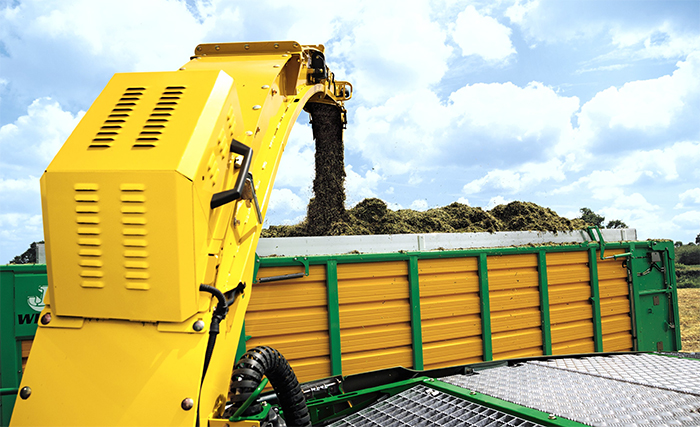
John Deere’s HarvestLab sensor system won the Highly Commended prize in the Award For Innovation category at the 2014 Farm Business Cream Awards, which recognise the best innovations, ideas and success stories in the dairy industry. The award was judged by an eight-strong panel headed by NFU President Meurig Raymond.
“The Cream Awards have really built on their position as the benchmark Dairy Industry Awards,” said organiser Caroline Whibley. “For this, the second year of the awards, the entries were once again fantastic and the winning line-up is hugely impressive.”
For this year’s grass and maize season, John Deere’s HarvestLab sensor system for the 7080 and new 8000 Series self-propelled forage harvester range is uniquely able to measure a full range of crop constituents for the first time, quickly and accurately while on the move. The constituent range includes sugars, starch, protein and crude fibre content, as well as dry matter.
John Deere is currently the only manufacturer with a proven, accurate, commercially available system for measuring both grass and maize constituents in real time. Mounted on the forager spout and taking crop readings 17 times per second, the versatile HarvestLab system can also be removed from the forager spout to allow it to be used for stationary feed analysis of different forage ingredients and for clamp silage analysis in the winter.
Farmers as well as contractors looking to generate extra income can therefore benefit from this latest advance in precision farming technology. The new ability to measure sugar as well as dry matter levels in real time also provides the opportunity to manage the silage additive process more efficiently, using a range of commercially available automatic variable rate application systems.
The latest version of HarvestLab is based on near infrared (NIR) sensor technology manufactured for John Deere by Zeiss Jena, and robust constituent sensing calibration curves developed specially for John Deere by various partner companies including DairyLab, depending on the crop. Using this additional crop data, the HarvestLab sensor can help livestock farmers to optimise their herd’s performance from silage, more accurately balanced against the correct amounts of extra bought-in feeds when required.
Similarly, operators of new bioenergy plants can more easily calculate the optimum amounts of biomass material to use for efficient energy production, particularly as starch content is the key to this process. John Deere’s i-specification self-propelled forage harvesters are ideally suited to harvesting maize and other energy crops for biomass, and can chop consistently to the necessary length for bioenergy plants, down to 4mm.
The forager’s integrated ‘intelligent’ technology package includes the HarvestLab sensor and AutoLOC. Using the machine’s infinitely variable length of cut (IVLOC) transmission, this provides automatic adjustment of the length of cut depending on the dry matter content of the crop being harvested. This is based on settings programmed in by the operator on the machine’s in-cab GreenStar touchscreen display prior to work, according to end user requirements.
Using HarvestLab, the operator can also adapt more easily to different weather conditions – when it’s wetter, for example, he might want to use a longer chop length, which can be adjusted very easily from the cab. This means output can be varied and monitored not just from farm to farm, but from field to field or even trailer to trailer, as required.
The HarvestLab system has been independently verified by DLG – the Germany Agricultural Society, which regularly conducts large-scale independent testing of agricultural machinery in the field as well as in laboratory conditions – to consistently deliver from +/-0.3 to 2 per cent accuracy, depending on the forage constituent being measured.
